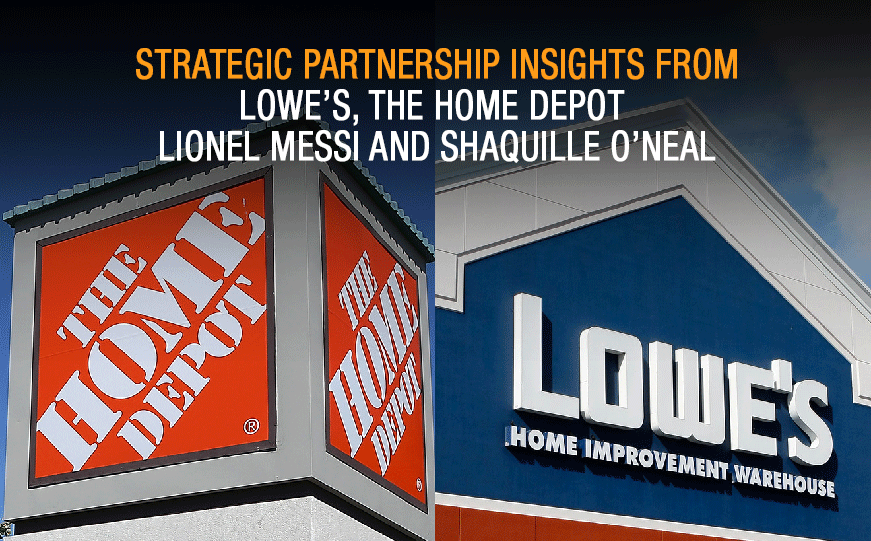The Home Depot released its latest earnings a week ago, and the report revealed significant insights into the company’s financial performance and strategic direction. As one of the two leading home improvement retailers in the United States, the brand is a critical indicator of trends and shifts in the builder products and building material sales channels.
And a beacon for the economic momentum of the US macro environment.
In the latest quarter, The Home Depot reported total revenue of $38.8 billion, marking a year-over-year increase of 3.2%. Net earnings for the quarter were $4.2 billion, a 4.1% rise compared to the same period last year. Earnings per share also saw growth – reaching $4.54 – up from $4.15 in the previous year.
The company continues to seek business with the professional … to augment a challenging economic environment for DIY shoppers whose renovations pulled the brand forward during the pandemic.
This week – following The Home Depot results – Lowe’s reported first-quarter sales of $21.36 billion… about 4.4% below last year’s $22.35 billion. Profits in fact, fell more than 20% compared to the first quarter of 2023. Lowe’s posted $1.76 billion in net income… compared to $2.26 billion in the same period last year. While still better than the $1.68 billion analysts expected, earnings per share at $3.06 fell from $3.77 last year.
Strategic Initiatives and Market Trends
Both big box brands recognized lighter foot traffic. And softness for large-ticket purchases, which may have been adversely affected by higher interest rates. Each retailer has continued to invest heavily in digital transformation and enhancing its e-commerce platform. In fact, online sales for The Home Depot accounted for over 14% of total sales… reflecting a growing trend across the entire home improvement sector.
The Home Depot has been expanding its pro business by targeting both small and mid-size contractors who are seeking expanded services like job site delivery. This segment has shown continuing growth… driven by strategic partnerships, enhanced loyalty programs and dedicated service offerings. Yes, one of the primary reasons for its acquisition target of SRS Distribution.
Will Home Depot’s future earnings be influenced by its decision to partner with Shaquille O’Neal?
After all, strategic partnerships with celebrities can lend momentum to other major brands, right?
And consider that Home Depot is not alone in the channel for pursuing this strategy.
Not so co-incidentally, Lowe’s partnership with Lionel Messi illustrates how aligning with influential figures can amplify brand visibility and credibility. These high-profile endorsements could well demonstrate how building product brands can transcend traditional marketing by leveraging influencers.
And that’s as true with building materials marketing – when the program includes a global celebrity – as it is when retaining a relevant niche Tik Toker.
The Power of Celebrity Endorsements in Building Products
Lowe’s decision to partner with the global soccer icon Lionel Messi is a case in point. Messi’s appeal extends beyond sports… reaching diverse demographics across various regions. This partnership certainly could bolster Lowe’s brand recognition. The implied endorsement may well help position Lowe’s as a dynamic and globally-engaged brand. According to Forbes, Messi’s brand value and extensive social media following significantly enhance the marketing campaigns he endorses.
Similarly, The Home Depot’s collaboration with Shaquille O’Neal – a beloved sports personality and astute businessman – illustrates the strategic use of celebrity endorsements in the building products sector. Shaq’s charismatic presence and genuine persona resonate with both professional contractors and DIY enthusiasts. This partnership highlights how a relatable celebrity can bridge the gap between professional and personal use of building products. Helping to foster a potential broader customer base.
Maintaining Brand Integrity and Intellectual Property
Even at limited social media scale, leveraging influencer endorsements for building products, brands must prioritize maintaining their brand integrity and protecting intellectual property. This involves several crucial practices:
- Consistent Brand Messaging: Ensure that all marketing efforts align with the brand’s core values and messaging. The synergy between Messi’s dedication and Lowe’s commitment to excellence creates a coherent brand narrative. Similarly, Shaq’s approachable nature complements The Home Depot’s customer focus.
- Robust Legal Framework: Develop comprehensive legal agreements to protect intellectual property and clearly define the terms of the partnership. This includes specifying usage rights, duration and the scope of the endorsement.
- Strategic Content Creation: Collaborate with influencers to create engaging and relevant content that resonates with the target audience. Tailored content ensures that the brand’s message reaches the right audience effectively.
- Monitoring and Evaluation: Continuously monitor the impact of endorsements on brand performance and consumer perception. Use analytics and feedback to evaluate the effectiveness of the partnership and make necessary adjustments.
Best Practices for Building Product Brands
To leverage influencer endorsements successfully – while maintaining brand integrity and intellectual property – building product brands should adhere to the following best practices:
- Select Aligning Personalities: Choose influencers whose values and public image align with the brand’s ethos. This alignment enhances credibility and authenticity.
- Develop Clear Contracts: Create detailed agreements that protect the brand’s intellectual property and outline the partnership’s scope and expectations.
- Maintain Consistent Messaging: Ensure all marketing efforts reflect the brand’s core values and messaging, reinforcing a coherent brand identity.
- Engage in Strategic Content Creation: Collaborate with influencers to produce targeted and relevant content that appeals to the desired demographics.
- Implement Continuous Monitoring: Regularly assess the partnership’s impact on brand performance and consumer perception… applying adjustments, as needed.
- Educate and Inform: Provide training and resources to stakeholders… to ensure a unified understanding of the brand’s values and intellectual property protection.
By following these practices, building product brands can effectively leverage influencer endorsements. To enhance market presence. And maintain integrity. While growing brand equity.
You can download our Influencing the Influencers eBook here and if you’d like to explore how influencer marketing can work for your brand, we’re here to help. Send an email to Steve at sk@kleberandassociates.com to get the conversation started.




